Elevate your home garden’s soil health to unlock the full potential of your plants. Soil health is the cornerstone of a thriving garden, influencing everything from plant growth to yield and resilience. Whether you’re a seasoned gardener or new to the hobby, understanding and improving your soil’s condition is key to achieving successful harvests year after year. This guide delves into proven practices that will help you create a fertile, productive garden environment, ensuring your plants thrive in rich, nutrient-dense soil. By addressing factors like pH balance, nutrient availability, and soil structure, you’ll not only enhance your garden’s productivity but also foster a healthier ecosystem that supports biodiversity and long-term sustainability. Let’s explore the essential steps to elevate your home garden’s soil health and enjoy the rewards of a bountiful garden.
Key Takeaways
- Composting: Enhance soil fertility and structure by regularly adding organic materials like kitchen scraps and manure.
- Mulching: Suppress weeds, conserve moisture, and regulate soil temperature with annual applications of organic mulch.
- Soil Testing: Adjust soil pH levels for optimal nutrient availability using lime or sulfur amendments.
- Organic Matter Incorporation: Improve soil texture and nutrient content with additions like aged manure or composted leaves.
- Water Management: Optimize water delivery with drip irrigation systems to reduce runoff and prevent soil compaction.
- Cover Crops: Protect soil, reduce erosion, and boost nitrogen levels by planting cover crops like clover or rye.
- Avoiding Chemical Fertilizers: Use natural methods like composting and crop rotation for sustainable soil health.
- Minimizing Tillage: Preserve soil structure and organic matter to support microbial activity.
- Crop Rotation: Break pest cycles, improve soil structure, and maintain biodiversity through regular rotations.
- Protecting Soil from Erosion: Employ techniques like terracing to safeguard soil quality and ensure long-term productivity.
Improving Soil Health in Your Home Garden
To enhance soil health in your home garden, follow these organized steps:
- Composting : Start by creating a compost bin using materials like cardboard or wood chips. Add kitchen scraps such as banana peels, coffee grounds, and vegetable waste. Avoid meats and dairy to deter pests. Allow the compost to decompose over several months to enrich your soil with valuable nutrients.
- Mulching : Apply a layer of mulch around your plants. Choose from options like wood chips or straw. Ensure the thickness is suitable for your plants—too thick can suffocate them, while too thin offers minimal benefit. Mulch helps retain moisture, suppresses weeds, and regulates soil temperature.
- Soil Testing : Use a pH testing kit to determine your soil’s acidity level. Target a pH between 6 and 8. Adjust with lime if your soil is too acidic or sulfur if it’s too alkaline, following recommended dosage guidelines.
- Organic Amendments : Integrate amendments like fish emulsion or worm castings into your soil before planting. Consider purchasing worm castings from local nurseries or online stores if you don’t have earthworms in your garden.
- Aeration : Use a tiller to aerate compacted soil, especially if water pooling occurs after rain. This improves drainage and soil structure.
- Crop Rotation : Rotate crops annually to replenish nutrients and maintain soil health. Plan your planting schedule to include legumes and leafy greens alongside your favorite vegetables.
- Efficient Watering : Convert your sprinkler system to drip irrigation for controlled, water-saving watering. Avoid overwatering to protect plant roots.
- Natural Methods : Opt for natural compost and mulch over synthetic fertilizers to promote long-term soil health and sustainability.
- Raised Beds Construction : Consider building raised beds to improve drainage and soil conditions, especially if water pooling is an issue. While they may require an initial investment, they offer long-term benefits.
- Regular Monitoring and Adjustment : Add organic matter a few times a year, balancing amendments to avoid nutrient imbalances. Monitor your garden’s health and adjust practices as needed.
- Consult Resources : Engage with local gardening experts or join online communities for additional insights and tips. Workshops or forums can provide valuable learning opportunities.
By following these steps, you can create a vibrant, healthy garden soil that supports thriving plant growth.
Improving Soil Health in Your Home Garden
Enhancing soil health is essential for growing vibrant, healthy plants. Here are proven methods to improve your home garden’s soil:
- Composting: Start a compost pile to add organic matter. Kitchen scraps, fruit peels, and vegetable trimmings decompose into nutrient-rich compost. Allow 6-8 months for decomposition before using it as a soil amendment.
- Mulching: Apply mulch, such as straw, wood chips, or biodegradable plastic, to retain moisture, suppress weeds, and regulate soil temperature. Choose based on your climate—opt for water-retentive options in dry regions.
- Soil Testing and Adjustment: Use a soil pH test kit to determine acidity or alkalinity. Adjust with lime (for alkalinity) or sulfur (for acidity), following recommended dosage guidelines to maintain optimal conditions for your plants.
- Covering with Organic Materials: Spread organic materials like leaves or straw over the soil to maintain moisture and protect it from extreme temperatures. Aim for a 2-3 inch layer, adjusting thickness based on your specific needs.
- Avoiding Chemicals: Opt for organic fertilizers like compost, fish emulsion, or seaweed meal to maintain soil balance. Steer clear of synthetic fertilizers to prevent disrupting the natural soil ecosystem.
- Aeration: Incorporate sand or well-rotted manure into heavy clay soils to improve drainage and structure. This enhances root penetration and reduces compaction.
- Water Management: Water with rainwater or greywater if possible. Test water for salinity before use to avoid harming plants. Consider drip irrigation systems for efficient, slow-release watering.
- Crop Rotation: Rotate crops to replenish nutrients and prevent depletion. Research local gardening guides to find suitable rotation patterns for your region and soil type.
- Ecosystem Support: Encourage earthworms and microorganisms by adding compost or worm-friendly amendments. These organisms enhance soil structure and microbial activity.
- Seasonal Preparations: Prepare soil in the fall by incorporating amendments and letting them break down over winter. This provides nutrients for spring planting.
By implementing these methods, you can create a thriving garden ecosystem that supports robust plant growth and biodiversity. Tailor your approach based on your specific soil type, climate, and plant needs for optimal results.
What Are the Best Practices for Improving Soil Health in Home Gardens?
To achieve healthy, productive gardens, focus on these proven practices:
- Composting : Regularly add organic materials like kitchen scraps, yard waste, and manure to enhance soil fertility and structure. Consider using worm castings for added benefits. 1
- Mulching : Apply mulch annually to retain moisture, suppress weeds, and regulate soil temperature. Choose from options like wood chips or straw. 2
- Soil Testing and Adjustment : Analyze your soil’s pH levels and amend with lime or sulfur as needed. This ensures optimal nutrient availability for plants. 3
- Organic Matter Incorporation : Add organic amendments such as aged manure or composted leaves to improve soil texture and nutrient content. 4
- Water Management : Use drip irrigation systems to deliver water directly to plant roots, reducing runoff and preventing soil compaction. 5
- Cover Crops : Plant cover crops like clover or rye during fallow periods to protect soil, reduce erosion, and boost nitrogen levels in preparation for spring planting. 6
- Avoid Chemical Fertilizers : Opt for natural methods like composting and crop rotation to sustain soil health over the long term. 7
- Minimize Tillage : Reduce mechanical disturbance of the soil to preserve its structure and organic matter, which supports microbial activity. 8
- Crop Rotation : Practice rotating crops to break pest cycles, improve soil structure, and maintain biodiversity. 9
By adopting these practices, you can create a thriving garden ecosystem that promotes robust plant growth and sustainability. For further insights and detailed guides, visit our comprehensive resource hub at oldseed.org .
What Are the Best Practices for Improving Soil Health in Home Gardens?
To achieve healthy, productive gardens, focus on these proven practices:
- Composting : Regularly add organic materials like kitchen scraps, yard waste, and manure to enhance soil fertility and structure. Consider using worm castings for added benefits. 1
- Mulching : Apply mulch annually to retain moisture, suppress weeds, and regulate soil temperature. Choose from options like wood chips or straw. 2
- Soil Testing and Adjustment : Analyze your soil’s pH levels and amend with lime or sulfur as needed. This ensures optimal nutrient availability for plants. 3
- Organic Matter Incorporation : Add organic amendments such as aged manure or composted leaves to improve soil texture and nutrient content. 4
- Water Management : Use drip irrigation systems to deliver water directly to plant roots, reducing runoff and preventing soil compaction. 5
- Cover Crops : Plant cover crops like clover or rye during fallow periods to protect soil, reduce erosion, and boost nitrogen levels in preparation for spring planting. 6
- Avoid Chemical Fertilizers : Opt for natural methods like composting and crop rotation to sustain soil health over the long term. 7
- Minimize Tillage : Reduce mechanical disturbance of the soil to preserve its structure and organic matter, which supports microbial activity. 8
- Crop Rotation : Practice rotating crops to break pest cycles, improve soil structure, and maintain biodiversity. 9
By adopting these practices, you can create a thriving garden ecosystem that promotes robust plant growth and sustainability. For further insights and detailed guides, visit our comprehensive resource hub at oldseed.org .
What Are the Best Practices for Improving Soil Health in Home Gardens?
To achieve healthy, productive gardens, focus on these proven practices:
- Composting : Regularly add organic materials like kitchen scraps, yard waste, and manure to enhance soil fertility and structure. Consider using worm castings for added benefits. 1
- Mulching : Apply mulch annually to retain moisture, suppress weeds, and regulate soil temperature. Choose from options like wood chips or straw. 2
- Soil Testing and Adjustment : Analyze your soil’s pH levels and amend with lime or sulfur as needed. This ensures optimal nutrient availability for plants. 3
- Organic Matter Incorporation : Add organic amendments such as aged manure or composted leaves to improve soil texture and nutrient content. 4
- Water Management : Use drip irrigation systems to deliver water directly to plant roots, reducing runoff and preventing soil compaction. 5
- Cover Crops : Plant cover crops like clover or rye during fallow periods to protect soil, reduce erosion, and boost nitrogen levels in preparation for spring planting. 6
- Avoid Chemical Fertilizers : Opt for natural methods like composting and crop rotation to sustain soil health over the long term. 7
- Minimize Tillage : Reduce mechanical disturbance of the soil to preserve its structure and organic matter, which supports microbial activity. 8
- Crop Rotation : Practice rotating crops to break pest cycles, improve soil structure, and maintain biodiversity. 9
By adopting these practices, you can create a thriving garden ecosystem that promotes robust plant growth and sustainability. For further insights and detailed guides, visit our comprehensive resource hub at oldseed.org .
Essential Practices for Maintaining Healthy Soil in Home Gardens
To achieve healthy soil in your home garden, consistent care and attention are crucial. Here are some proven practices to help you maintain fertile and productive soil:
1. Composting
Composting is one of the most effective ways to enrich your soil. By adding organic matter like kitchen scraps, yard waste, or manure, you create a nutrient-rich environment that improves soil structure and promotes plant growth. Regularly incorporating compost enhances soil fertility and helps retain moisture, which is vital for sustainable gardening.
2. Mulching
Mulching is a simple yet highly effective practice. Applying a layer of organic mulch, such as wood chips or straw, around your plants helps suppress weeds, conserve water, and regulate soil temperature. It also acts as a natural barrier to prevent soil compaction and retains soil moisture during dry periods.
3. Testing Soil pH
Healthy soil requires the right balance of nutrients, and pH levels play a significant role in this. Use a soil test kit to determine your soil’s pH level. Most plants thrive in slightly acidic to neutral soil (6.0–7.0), but specific plants may prefer different levels. Adjusting the soil pH can be done with lime or sulfur-based amendments depending on your region’s needs.
4. Proper Watering
Watering practices vary by season and plant type. Deep watering encourages root development and reduces surface runoff. Avoid frequent shallow watering, as it leads to water stress and can deplete soil moisture. Consider drip irrigation systems or rain barrels to optimize water usage and maintain soil health.
5. Crop Rotation
Crop rotation is a cornerstone of sustainable gardening. By rotating crops annually, you reduce the risk of pests, diseases, and nutrient depletion. This practice also improves soil structure and prevents the buildup of pathogens that can harm your plants.
6. Cover Cropping
Cover cropping is an excellent technique for protecting soil over the winter months. Plants like clover or rye grass not only protect the soil from erosion but also contribute organic material when they decompose. They also attract beneficial insects and improve air circulation in the soil.
7. Avoid Overuse of Chemicals
Chemical fertilizers can damage soil health over time by disrupting microbial activity and leading to nutrient imbalances. Opt for organic alternatives like compost or natural fertilizers to maintain soil integrity and promote long-term sustainability.
8. Aerate the Soil
Regular soil aeration helps maintain airflow and root penetration. Tools like a fork or aerator can be used to create holes in compacted soil, reducing water runoff and promoting better root growth. This practice is particularly important for heavy clay soils.
9. Monitor and Adjust
Healthy soil is dynamic, and its condition can change based on environmental factors and planting habits. Regularly monitor soil texture, structure, and pH levels. Adjustments can be made through composting, mulching, or targeted amendments to ensure optimal soil health.
10. Protect Soil from Erosion
Erosion can severely degrade soil quality, especially in sloped or exposed areas. Implement measures like terracing, windbreaks, or native plants to protect your soil from wind and water erosion, ensuring it remains rich and productive for years to come.
By adopting these practices, you can create a thriving ecosystem that supports robust plant growth and ensures the longevity of your garden. Remember, healthy soil leads to healthier plants, and a well-maintained garden thrives on careful, thoughtful care.


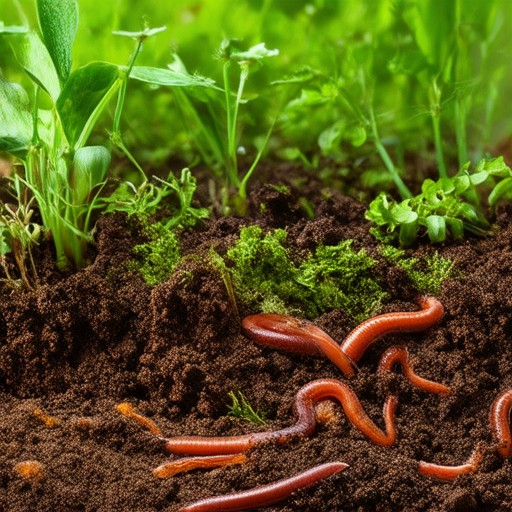
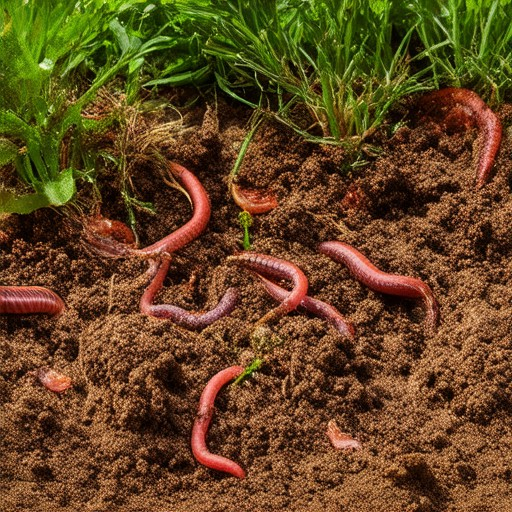

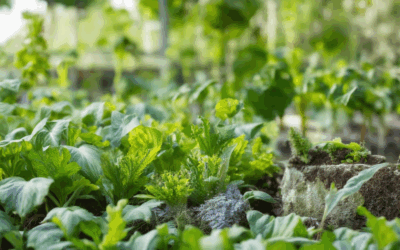
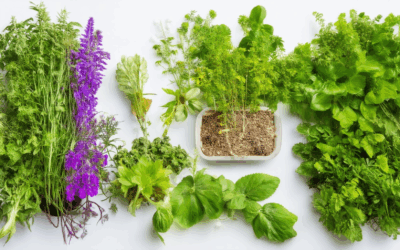
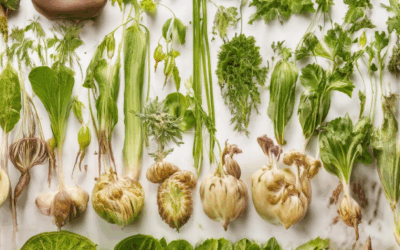
0 Comments